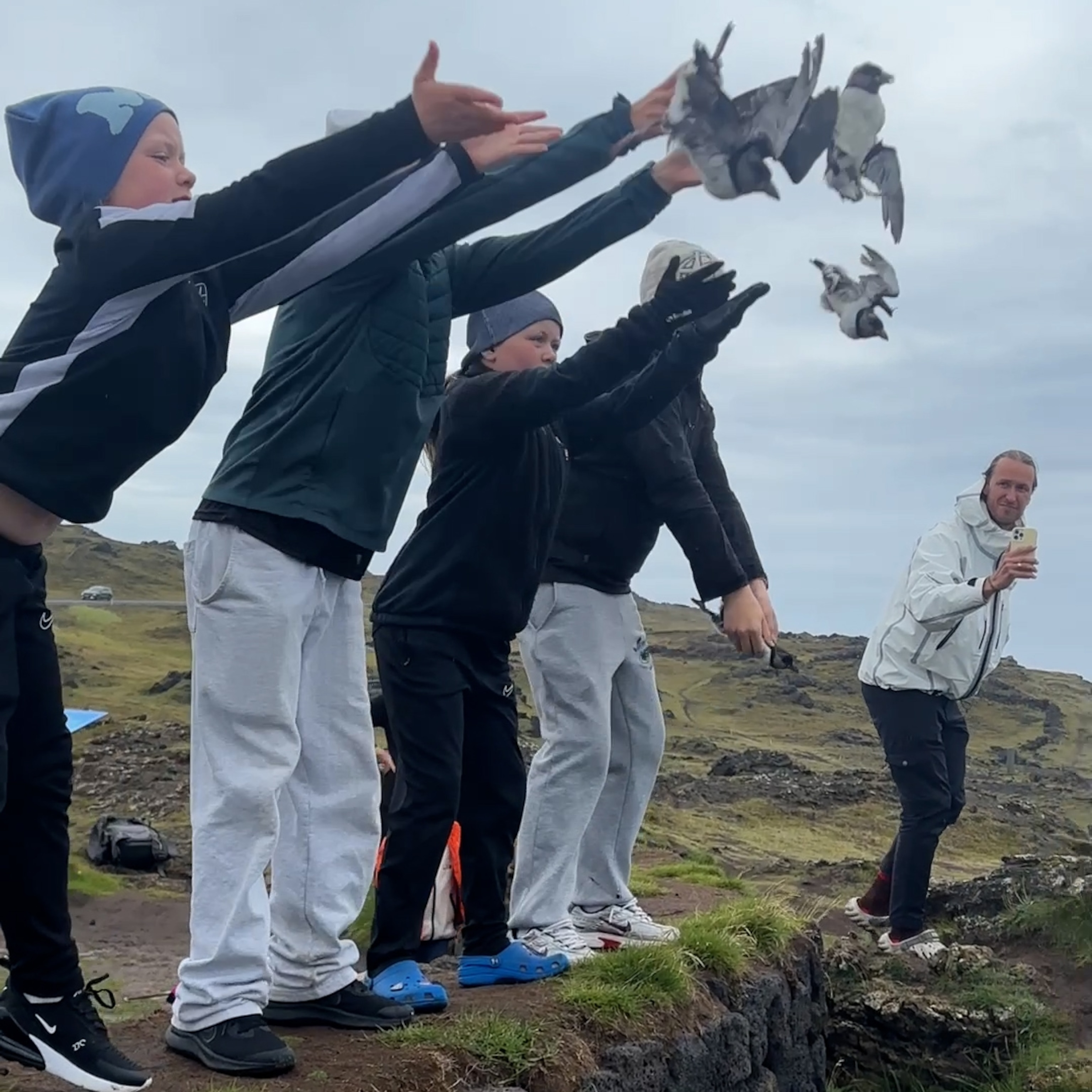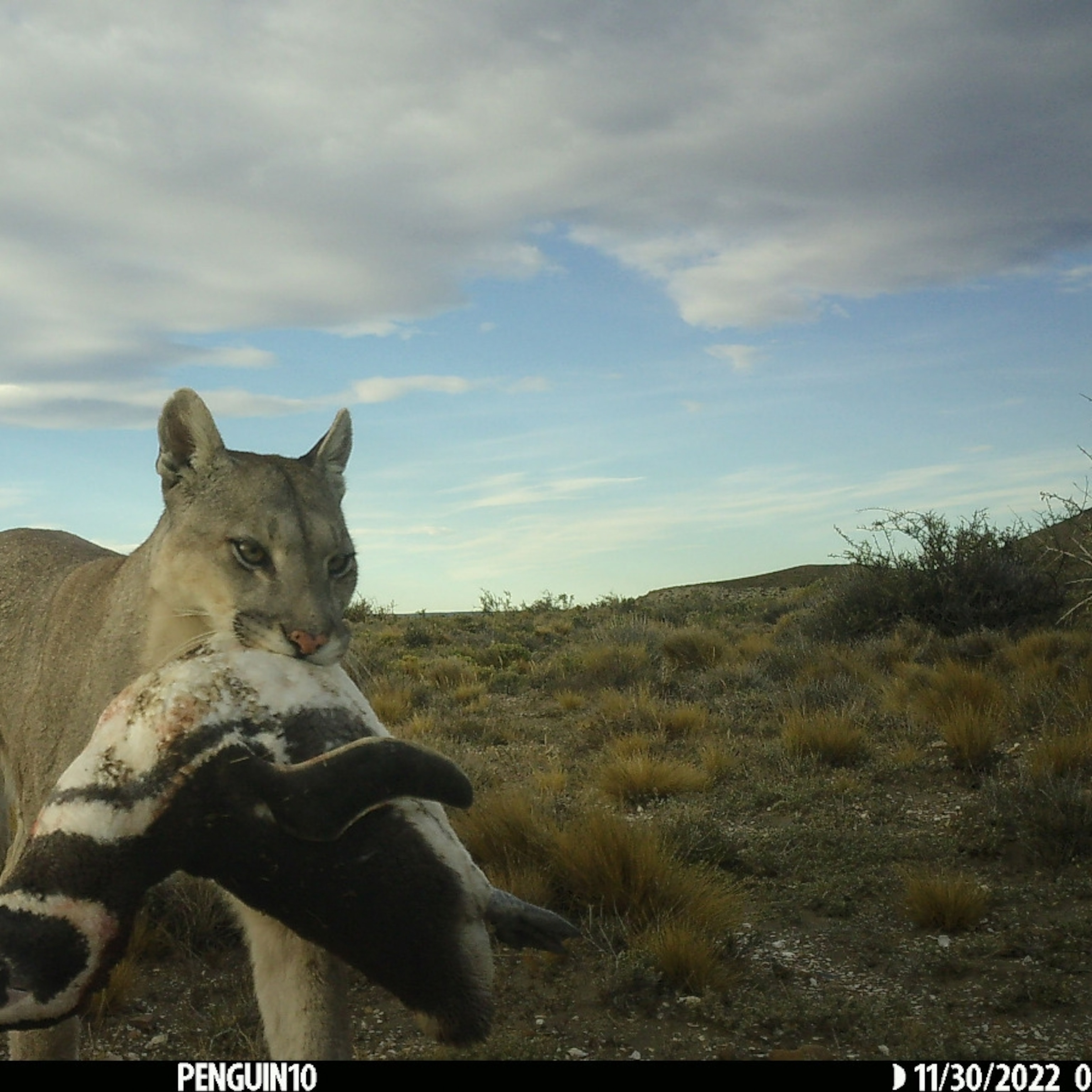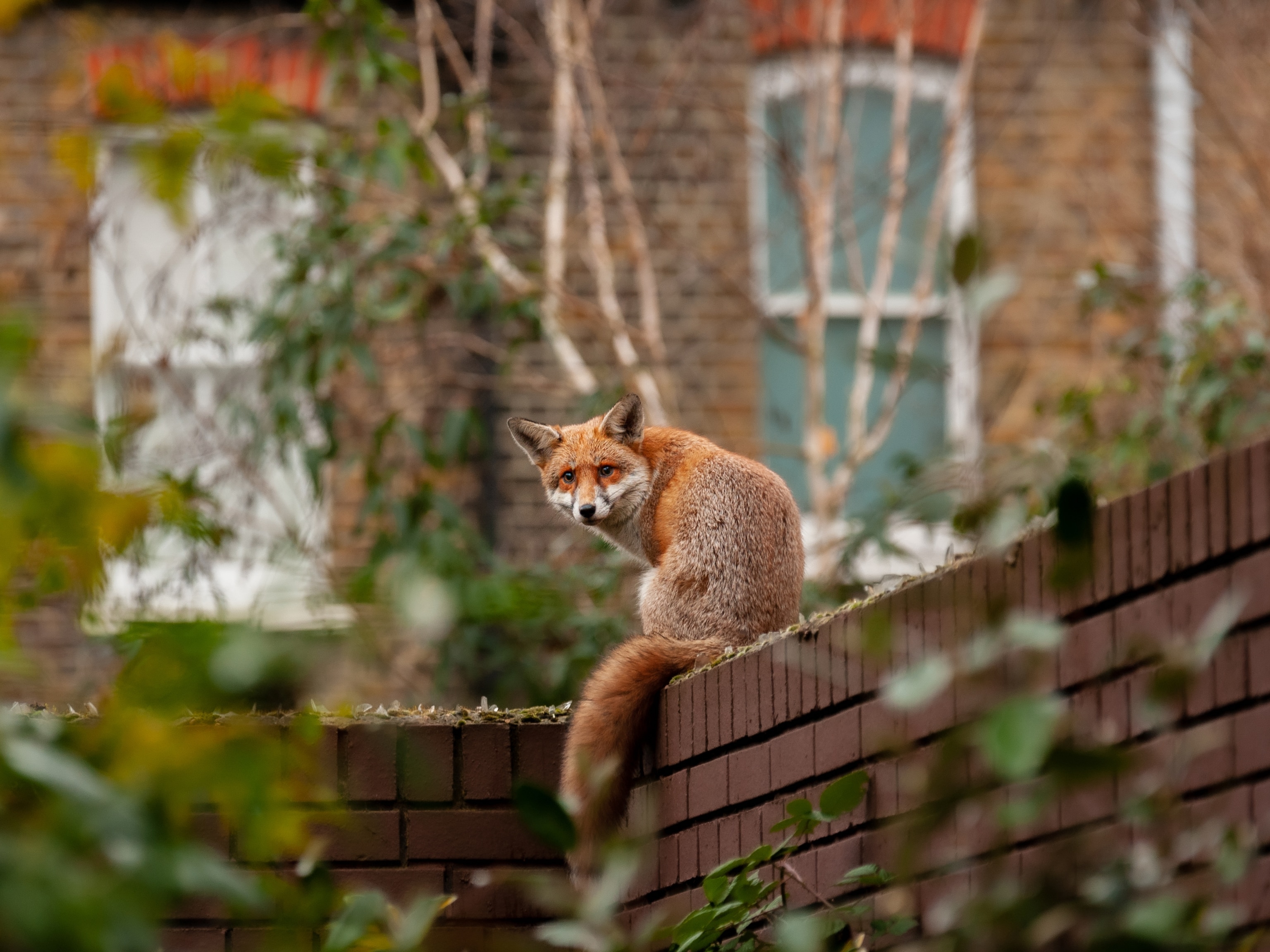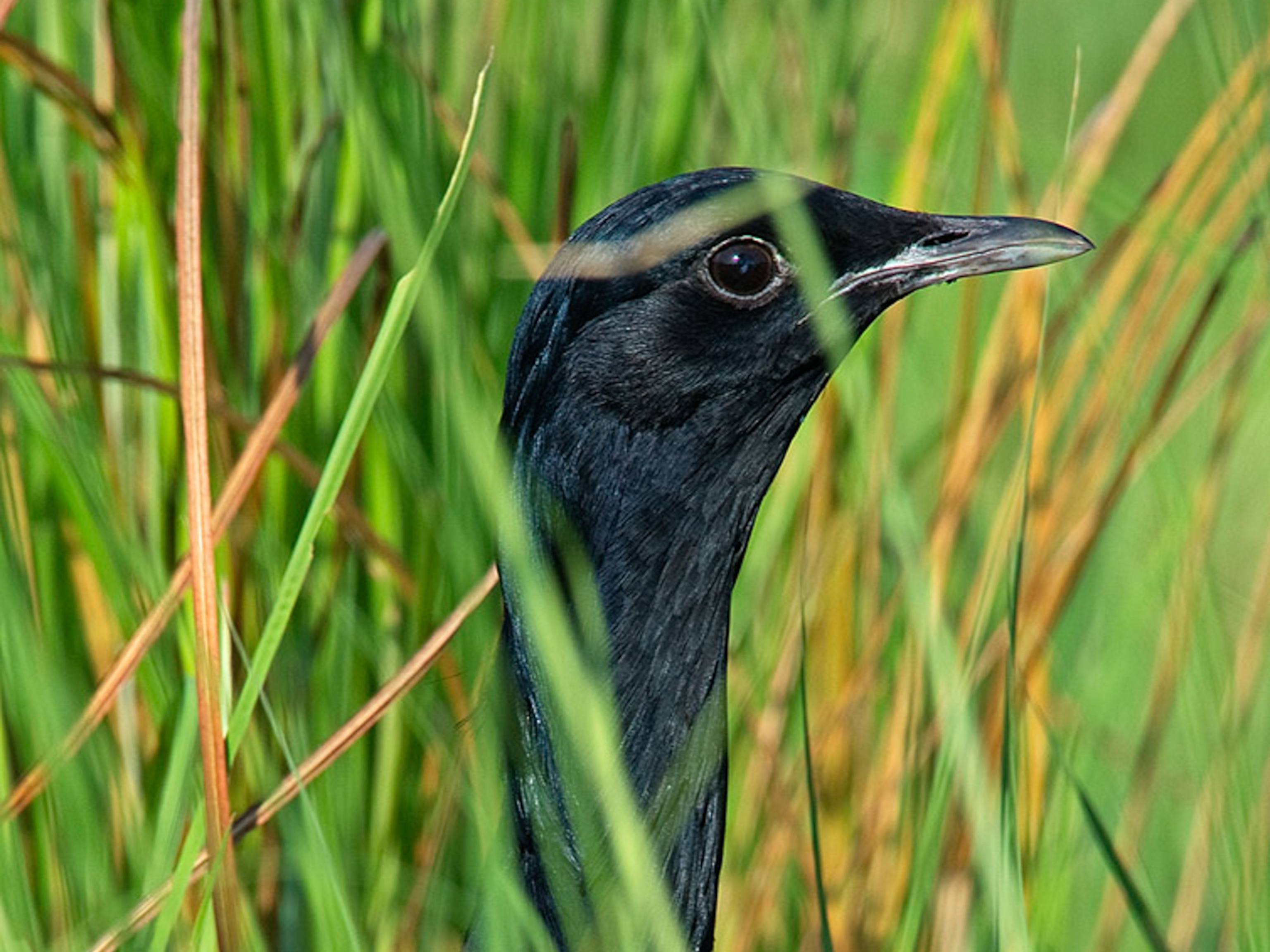
Why Do Seabirds Eat Plastic? It Smells Like Fish to Them
A sweeping look at 10 species of seabirds gives insight into why their numbers have plummeted over the past 60 years.
The Shiants, remote, cliff-edged islands off the coast of Scotland, are home to 350,000 seabirds, including great auks, puffins, and razorbills. This is the starting point for National Geographic contributor Adam Nicolson’s new book, The Seabird’s Cry. Celebrating 10 species in detail, he describes the incredible resilience of seabirds and the many adaptations that have enabled them to survive and navigate the oceans, while sounding a clarion call for their conservation amid dramatically falling numbers.
Speaking from his home in Sussex, England, Nicolson explains how guillemot colonies are information exchange centers; how new research is showing that those ultimate long-distance travelers, the shearwaters, “smell” their way across the globe; and what we can do to support seabird populations.
National Geographic has just kicked off Year of the Bird with a cover story by Jonathan Franzen titled “Why Birds Matter.” I’ll ask you the same question—why?
For me, these seabirds are symbols and embodiments of otherness, the non-constrained world. There is so much on the land where the rest of the living world seems to be dominated and diminished by us, but when you go to seabird colonies there is this pumping, loud, raging otherness. It’s a glimpse of the undiminished world.
The reason it’s undiminished is that, until recently, we have not dominated the oceans that the seabirds depend on. More of them have survived in greater numbers than most other creatures in the developed world, where huge proportions of the animal kingdom have been removed by us. And so one reason these birds matter is that they are emblems of what the world might be if we hadn’t done so much damage to it.
Seabirds also tend to disappear; they’re not reliably of our world, due to their migration and habits of life. Very deep in our consciousness is a sense that they are ambassadors from another world. And witnessing and feeling that is, I think, one of the great enlargers of life.
You start your book on the Shiant Isles in Scotland’s Hebrides. Put us on the ground—and tell us why these islands are so important to you.
The Shiants, as they’re called, are three small islands, of only about 500 acres in all. But because they’re made of volcanic dolerite, with 500-foot-high cliffs, they stand very high for their size and are visible from all around. In 1937, my great-grandmother left my father some money when she died. His mother saw an advertisement in the Daily Telegraph, “Islands for Sale, 500 Acres, early lambs, sea caves, puffins, 1,200 pounds.” He went there for the day, a 20-year-old Oxford undergraduate and a highly romantic man, fell in love with them, and bought them. He then gave them to me when I was 21, and in turn I gave them to my son, Tom, when he turned 21.
They’re windswept, wild, intensely beautiful, but intensely uncomfortable islands, and very difficult to get to, with one tiny bothy with two rooms and a fireplace in each room, and utterly rat-ridden at the time. But with about 350,000 seabirds breeding there, including puffins, guillemots, razorbills, shags, fulmars, and great skuas. Every summer, it’s an absolutely alive bit of the Earth. That’s why they matter to me.

Some of the greatest bird migrations are undertaken by shearwaters. Tell us about the remarkable new research into the way they navigate.
Through ring recoveries in the 50s, 60s, and 70s, people started to find out that when shearwaters left their northern nesting islands, they headed south, along the western shore of the European continent and North Africa. Only when this amazing modern miniaturized tracking technology was developed enough did people begin to understand that they live a life of everlasting summer. They summer in the Northern hemisphere and summer in the Southern hemisphere. Each year, they undertake these extraordinary figure of eight migrations, following the wind gyres of each of the two hemispheres for 40,000 miles.
Anna Gagliardo of the University of Pisa, working in the Azores, took some shearwaters from where they were nesting and divided the group into three. For one third, she didn’t do anything to alter the way in which they might perceive the world. Another third, she attached a little plastic box with glue to their heads. Inside was a pair of free-tumbling magnets, so the magnetic environment in which the shearwaters were living would be constantly disturbed. The third group, she put a chemical into their nostrils that temporarily disabled their ability to smell. She then took these three groups on a ship about 500 miles east of the place in the Azores where she had taken them from their burrows.
The results were extraordinary. The group she had done nothing to flew 500 miles pretty well straight home to the burrows. The ones that had had their magnetic sense disoriented also flew straight home, proving that their ability to navigate had nothing to do with the Earth’s magnetism. But the group that had had its ability to smell disabled was radically lost. For weeks, they desperately wandered around the northeast Atlantic, up to the Bay of Biscay, Portugal, and West Africa. That shows it is perfectly clear that shearwaters, in order to know where to go, need to be able to smell. But they are not smelling their nest site 500 miles away; they’re smelling where they are. Somehow, they have a smell map of the ocean so that by smelling a particular patch of ocean, they know where they are and can then decide where to go.
It has to do with a chemical called DMS, which is released when phytoplankton, i.e. vegetable plankton, is crushed, usually by zooplankton eating it. This is a signal that little shrimp-like zooplankton are present, eating the phytoplankton. And if zooplankton are there, there’ll be fish there, too, and the birds will be interested in going there because they’ll be able to catch their prey. People have done experiments showing that if you release DMS, even in tiny concentrations, you immediately attract seabirds.
Whether DMS is the whole picture is something else. There are almost certainly other chemical signals across the ocean, which these birds get to know and understand. They have more recently done other experiments, which show that shearwaters and the other tube-nosed birds, like petrels, albatrosses, and fulmars, are dependent on smell but not only smell. If you disable a bird’s smelling ability at its nest, it can fly to where it usually fishes, but it can’t fly home.
There is a problem now with plastic. If you leave plastic floating in the sea for over three months, it starts to release plumes of DMS. The huge amounts of plastic found in seabirds’ stomachs is because they are mistaking this plastic for food. It clogs their guts, and makes them unable to get enough real food into their stomachs. Greenpeace estimates that eight million tons of plastic a year are going into the ocean.
You also suggest that seabirds learn from each other where to go fishing. Explain how the densely packed colonies of guillemots and gannets serve as “information exchanges.”
There are lots of reasons for a seabird not to be in a colony. It’s highly competitive, neighbors can be really damaging and, if all the birds are concentrated in one place, the pressure on fish resources is intense. If you go to colonies, you can find very good nest sites available on a rock but no birds there. Instead they cluster in these incredibly dense gatherings. Guillemots have something like 8 square inches as their defended territory.
Why? What evolutionary advantage is served by clustering in colonies, when the dangers and disadvantages are so clear? It seems that the reason that seabirds are colonial is that their prey is so difficult to find. Land birds can find seed and worms everywhere, so there’s no need to be colonial. But fish are difficult to find and on the move, so the premium for seabirds is on information. If you can know where other birds like you have been fishing recently, you will want to get that information from them and be in the place where that information is as new as possible, i.e., when those birds return to their own nests. So, you cluster as tight and as hard as you can.
In describing the gannets of Bass Rock, you call their colony “a magnificent demonstration of existence clenched in hate.” Take us inside this avian dystopia.
Gannets are one of the great information-center birds. The premium for getting good information for a gannet is so high that they will risk nearly everything to be at the center when the information comes. If you go to a gannet colony, you see that each gannet’s nest is almost mathematically arranged on a grid. The dimensions governing the layout of the grid is the reach of a gannet’s bill. And if any other gannet attempts to breed within the reach of a neighboring gannet, it will die. The gannet bill has this incredibly sharp, slashing tip at its leading point, which can take an eye out.
This is a world of very intense competition and mobile sustenance. Fish don’t stay still for you to go get them with a combine harvester. You have to be on the case if you are a seabird. Gannets have amazing capabilities. Their entire chests are padded in air sacks, so that when they hit the sea, their ribcages and diaphragms aren’t damaged. Their eyes can also change from seeing in air to seeing under water, in less than a twelfth of a second after hitting the sea. They are incredibly evolved things, with this total gangster capacity! Bass Rock is one of the wonders of the world.
You write at the end of the book that we are currently witnessing “a resetting of life.” Explain that idea and the challenges seabirds face. And what can we do to protect them? Are you optimistic?
The number of seabirds in the world has dropped by something close to two-thirds in the last 60 years. About 60 years ago, there were about 1.5 billion seabirds in the world. Now, there are about 500 million. Most seabirds’ families are in decline and continue to be in decline. And the reasons they are in decline are entirely to do with us! Hundreds of thousands of birds die every year, caught in fishing gear; nesting sites are destroyed by our development and our dogs, cats, and rats kill many more.
They are also declining due to global warming, which is deeply changing the circulatory systems of the ocean. With those changes in ocean patterns, the whole trophic structure of the oceans is changing. If you get a change in phytoplankton and zooplankton, of small and big fish, all those things impact the way in which seabirds survive and feed their young.
I think we can be optimistic if everybody decides to do the right thing, to make sure we aren’t the generation that presides over the death of these marvelous creatures! They have tons of resilience built into them. Albatrosses can live 80-90 years, so they can spring back from one failure or disaster for a year or two. But the pace at which ocean systems are changing may be too much for those resilient systems to work. One encouraging thing is that after the great extinction, 66 million years ago, when most life— including the dinosaurs—died, quite a few bird lineages survived. Cormorants, penguins, albatrosses, were all in existence before that extinction and have done marvelously ever since. So it may be that seabirds have an ability to survive the worst that we can do to them. But nobody should be too complacent about that.
This interview was edited for length and clarity.
Simon Worrall curates Book Talk. Follow him on Twitter or at simonworrallauthor.com.








